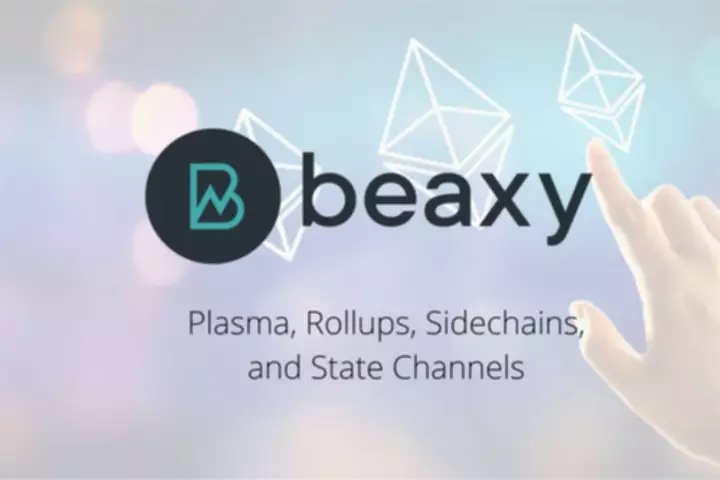May 27, 2021 |
James Messi
A primary issue in trading and transacting through the high performance blockchain Ethereum, scalability is at the center of all development efforts that aim to optimize the digital ecosystem.
The steep fee structures and network congestion brought about by its compatibility across multiple cryptocurrencies had compromised the Ethereum ecosystem and the amount of people that can use it.
Currently, developers of Ethereum platforms and layer 2 solutions undertake a great deal to address these concerns.
Scaling Ethereum
How is Etherum scaled? Two methods are employed here. The first method entails performing certain functions on-chain that will improve the capacity of base network transactions.
The second method requires new chains or layers to be built on top of the base Ethereum blockchain. In this case, user activity within the Ethereum ecosystem can be distributed to additional layers of protocols that are built on top of Ethereum. Reducing the congestion on the main chain adds efficiencies to the entire Ethereum ecosystem.
When one compares the solutions for a second layed on Ethereum, we must consider two things:
- Layer-1 involves Ethereum converting from PoW to PoS, a process called Sharding. This is provided by ETH 2.0.Sharding allows for large computational work that is broken down into more manageable pieces that are aptly called “shards”.
- Layer-2 takes on two tasks: validating transactions and categorical verification services.
The Top Four Layer 2 Solutions

In this segment, we will take a look at the competencies of each Layer-2 solution and see where these excel and where these can be further improved.
- PlasmaPlasma is composed of Smart Contracts and Merkle trees. The merging of such allows the development of child chains which are unlimited in number. This results in a tree-like structure.The secondary chains in Plasma make interactions only within a given period; the main chain is reserved for disputes.With regard to deposits on second layer chains, these can be performed through Smart Contracts. Afterward, the Plasma Chains will delegate a unique ID to the asset. A batch of the plasma transaction is then generated by an operator off-chain at intervals.Withdrawals are performed through the “challenge period”. Within this duration, any user is allowed withdrawal requests through Merkle branches should these be proven fraudulent. Once the time frame ends, the user is allowed withdraw assets.In general, Plasma is a competitive solution for payment. It is advantageous for dealings with NFTs as every asset unit receives an ID that is unique to it. Plasma gives its users the capability of being able to call block roots. Thus, at the event that consensus ceases from creating blocks, claims on Ethereum can still be made with the deposits and funds that are still accessible.However, Plasma does come with a downside. Mass exit is a great concern among its users. This results into the root chain being flooded. Such simultaneous departures may be caused by transactions that are launched by shady individuals, scammers, or even attacks that are attempted to the network.And unlike the other solutions that we will discuss, Plasma is far from being complex. But this is only in light of the security measures that it aims to improve.
- RollupsRollups got their name primarily because they roll-up or compile transactions and manage to fit them in a singular block. It relieves the Ethereum network and renders transactions quicker. This helps scalability in that transactions are processed away from the main chain.However, Rollups do retain some data on-chain so that the solution may perform compression methods that help create further efficiencies and lower gas fees.Reducing fees is performed through a combination of encoding techniques and alternative compression methods. The latter bears great importance as through it, rollups are given the capability of rendering exponential improvements on scalability. There are different Rollup Classes:2.1. Optimistic RollupsThis type of rollup rose above the imposed limitations on the other second layer solutions. This is a considerable development from Sidechains considering the security risks of being compromised by shady miners and validators.2.2. ZK RollupsShorthand for Zero Knowledge Proof, this rollup class includes SNARK in every batch. Here, on-chain verification is speedy, notwithstanding computation size. ZK-Rollups ar composed of 2 user types:2.2.1. TransactorsThese individuals make their own transactions and have them go public throughout the network2.2.2. RelayersThese users build a rollup through the gathering of huge volumes of transactions and then rolling them all up.
- SidechainsSidechains are a merging of the two Layer solutions. This chain depends solely on its mechanism, not on what the chain offers.Using Sidechains entails creation of a new chain and a consensus.
- State ChannelsThe last scalability method on our list, State Channels, refers to a method that allows for interactions off of the main chain. Bi-Directional payments may be handled by State Channels. However, Channels are still limited as it is not yet possible for these to send funds to participants on competing chains. Should the transactions get more complicated, users become incentivized to store funds on the sidechain.
The Takeaway: Multiple Solutions and Remedies
Ethereum, being an ecosystem and cryptocurrency titan is bound to address multiple concerns that test its viability as a service. But, these issues are effectively drawn into highly competitive solutions that each user can choose from.
Regardless, Ethereum developers have made leaps in making the ecosystem more efficient and lucrative and will continue to do so.